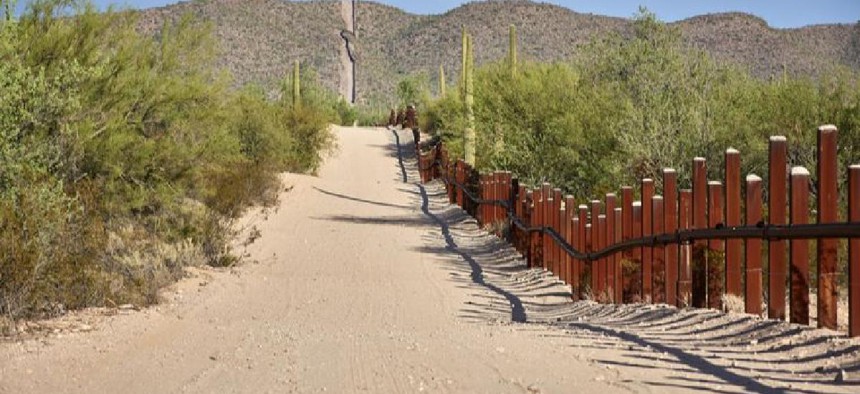Hurd says tech can secure the border

Border sensors and a common tech platform are keys to border security, not a wall, said Rep. Will Hurd.

A remote section of the U.S.-Mexico border in Arizona. (Image credit: Martin Froyda/Shutterstock.com)
The future of border security is in tech not in walls, according to a lawmaker whose district includes more than 800 miles of U.S.-Mexico border.
"We need to be talking about a strategy on how to secure the border, not talking about one, specific tool," said Rep. Will Hurd (R-Texas) at the Security Industries Association breakfast on Capitol Hill on June 27.
Hurd sketched a vision where senior security officials can obtain operational pictures of border activity at the touch of a button. "The head of Border Patrol -- at any time -- can say, 'I want to know what's happening at mile marker 17.' They should be able to see that picture and understand what's happening," said Hurd.
Hurd said that the latest technology can be integrated in a way that’s usable by law enforcement agents on the border.
"You should not require a Ph.D. in computer science to work the technology. You should not have to be sitting in a van miles away in order to work the technology. The operator should be able to get it while they're on foot on the border. That's the standard that we should have," he said.
Hurd is a longtime opponent of a plan to build a wall along the southern border. There are many parts of the border where Border Patrol's response time to a threat is measured in hours to days, because of distances and rugged remote terrain, according to Hurd. Those distances, dramatically erode the effectiveness of a physical barrier, he said.
At the same time, the 20-year-old technology used to monitor the border is outdated. According to Hurd, new sensor technologies are changing the game and could provide a common picture of threats and activity along the 2,000-mile border.
Currently, Border Patrol does not have "a coordinated platform to take all the various sensors and have a common operating picture of the border. That common operational picture, he said, can provide data on everything moving back and forth across the border.
"We can do that. It's not hard, but it takes a little time, effort, energy and planning," he said.
"The technology exists to detect a threat, assess that threat, track the threat until you're able to deploy the most important resource -- the men and women in Border Patrol," he said.
Hurd said his vision is getting some traction at the White House, but didn't elaborate.





